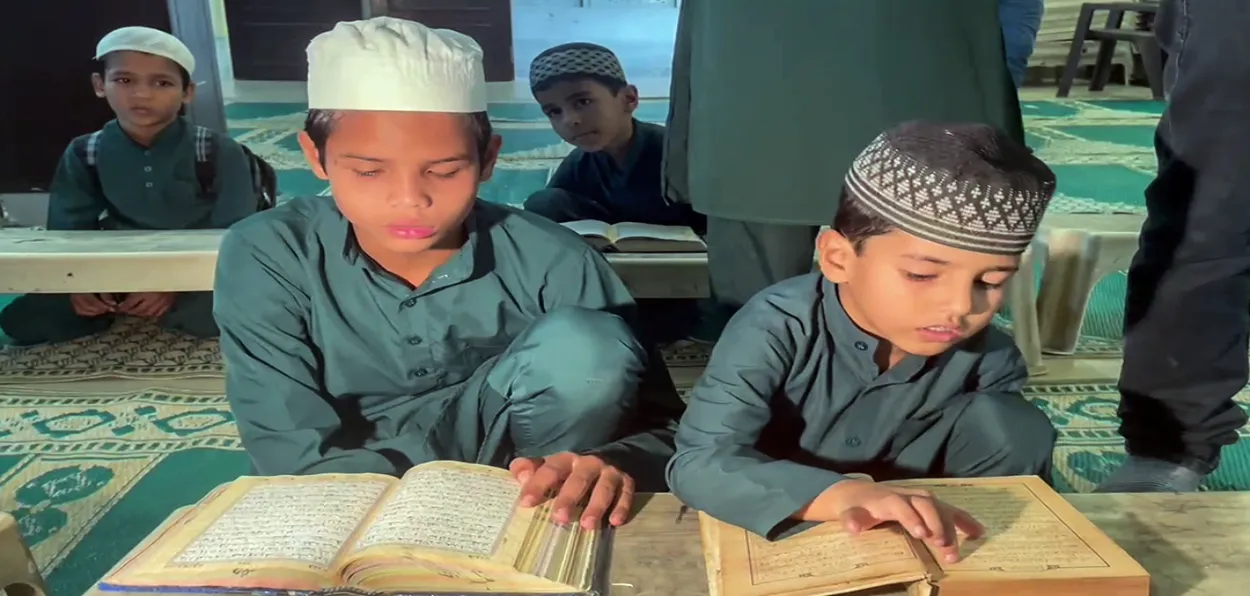
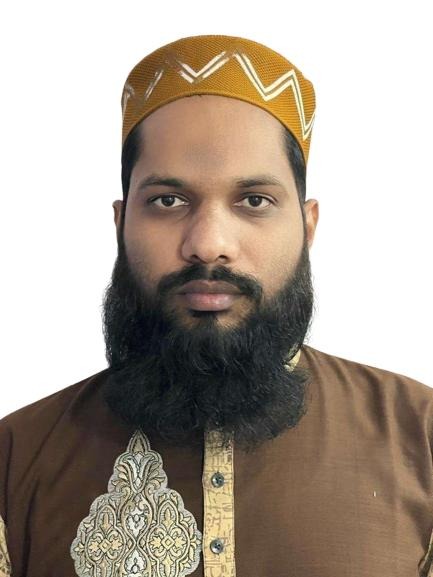 Md Modassir Ashrafi
Md Modassir Ashrafi
Madrasa or Maktab means a school. Logically, it must be religion-neutral and exclusively education-centric. When the first Madrasa in Delhi was established during the Sultanate period, it was a model school, open to all.
Over the centuries, it turned into a center of Islamic education, mainly for the lower strata of society. Limited to strict theological subjects, Madrasas became redundant. Today, Madarsa modernisation is both a concern of the community and a government programme.
How did it start?
Between the 8th and 13th centuries, Muslims made significant advances in culture, economy, education, and intellectual growth. They introduced theological studies and also laid down principles of modern subjects like medicine, optics, and linguistics. Scholars translated from and into the Sanskrit, Persian, and Greek languages. This laid a foundation for imparting knowledge and scholarship.
Baitul Hikmah (academy of acquiring knowledge and wisdom) of Baghdad attracted students from across continents. Muslim scholars like Al-Khwarizmi (founder of Algebra) and Ibn al-Haytham (pioneer of optics) symbolised the Golden Age of Muslims.
It was during this period that Madrasa or seminaries were established to channelise theological knowledge. These madrasas borrowed intellectual rigour from Baitul Hikmah, which was open to free intellectual inquiry.
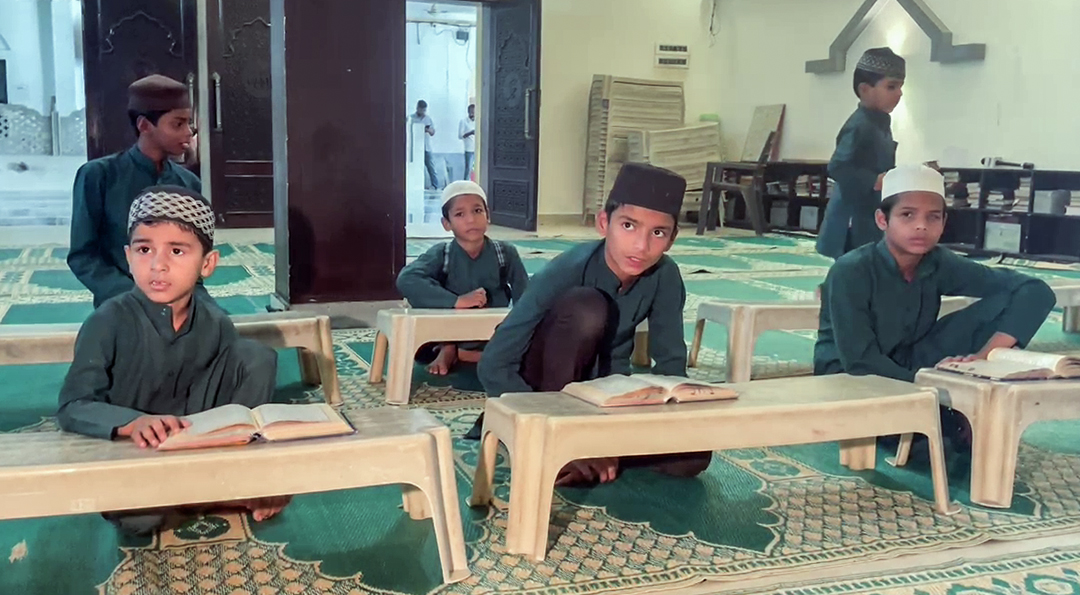
Students in a Madrasa
As Mongols ravaged the Arab lands, the scholars found safe refuge in Central Asia and India. India was always open to scholars and all types of culture and religious practices. Soon, madrasas – which were a hybrid of Arab and Turkic Seljuk models of religious and scientific education – found a new abode and a country-wide studentship.
During the Sultanate period (1203-1206), the Madrasas produced religious-cum-judicial officers, bureaucrats, and scholars. Madrasas were founded in the name of different rulers, like Mohammad Gouri (Ajmer). Qutub-ud-Din Aibak and Sultan Altatmush established mosques and madrasas in Delhi, Badayun, and other surrounding areas.
In Delhi, Balban founded a famous seminary called Madrasa-e-Nasiria. A Madrasa dedicated to Alauddin Khilji came to be known as the Madrasa Maqbara-i-Alauddin Khilji in Delhi, and a well, for providing water to the students, called “Hauz-i-Khas” was constructed nearby.
Sultan Firoz Tughlaq had scholars like Zia Uddin Barni, Maulana Jalal Uddin Rumi, Qazi Abdul Qadir, and Azizuddin Khalid Khani in his court. He founded madrasas throughout the country.
Sikander Lodhi enlisted educators from Arabia, Persia, and Central Asia as instructors at the madrasas. He founded madrasas at Mathura and Agra. At the Agra Madrasa, even non-Muslims acquired proficiency in Persian. He founded more madrasas in Jaunpur, Ahmedabad, Bihar Sharif, Gulbarga, Bidar, Mand, Daulatabad, and Bengal. The Madrasa in Jaunpur is referred to as the “Shiraz of India”.
All these institutions developed an education model based on a rational curriculum. The schools taught subjects like logic, mathematics, astronomy, chemistry, medicine, poetry, history, geography, Jurisprudence (Fiqh), and Islamic law. Some of the madrasas also held classes in arts and had exchange programmes with seminaries of the Ottoman Empire and schools in Europe.
Most of these Madrasas were supported by religious endowments and established on rented lands or given free in every major town. These were administered through akhund (principal), mudarris (teachers), and mutawalli (steward). Students were given free accommodation and food. Only well-to-do students paid tuition fees, and poor students worked for the school and received financial assistance from the college’s charitable foundation. These madrasas helped Indians flourish in math, science, medicine, culture, and economics.
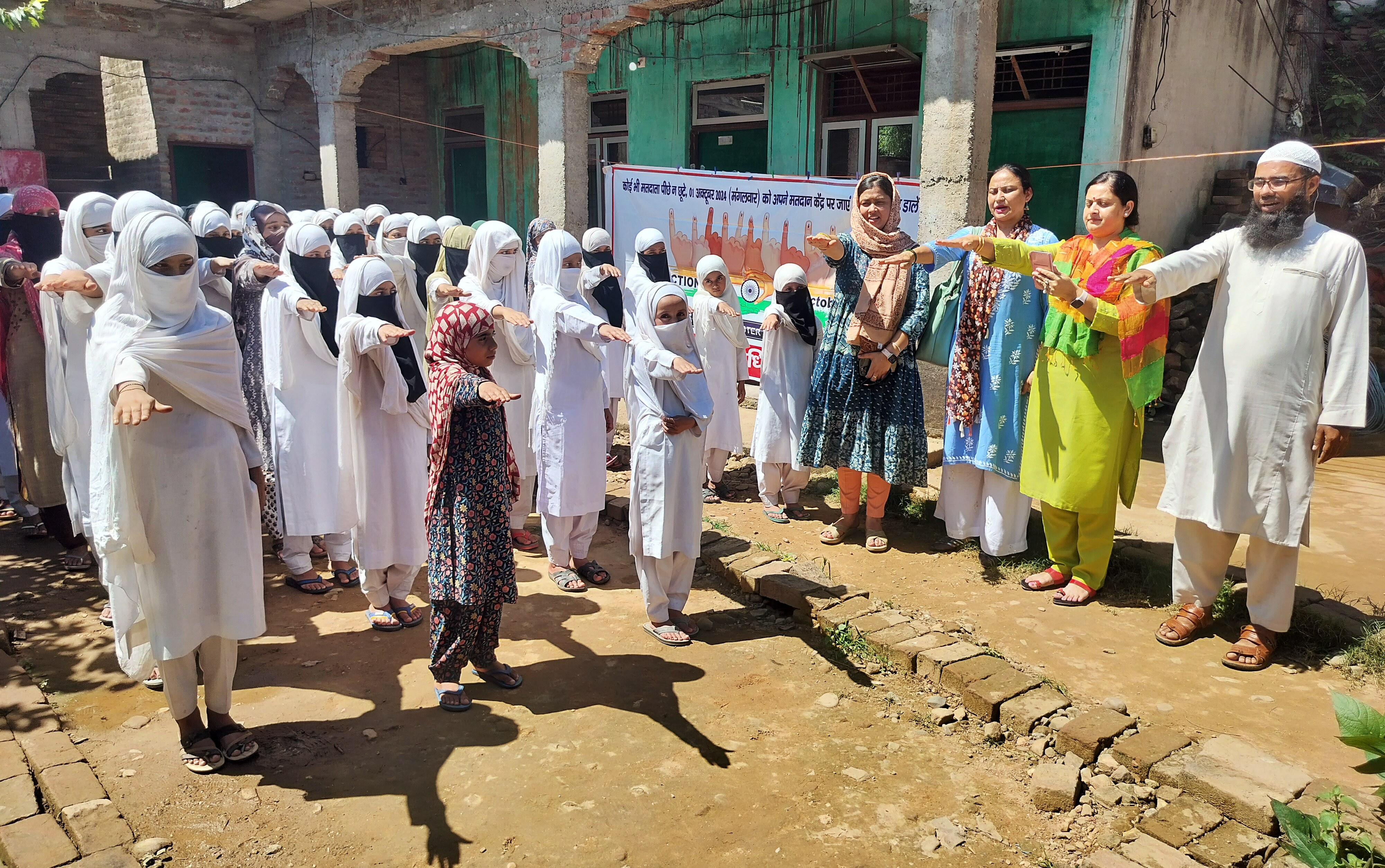
Students in a Madrasa taking pledge to cast their vote in Udhampur, J&K
Madrasas focused on fiqh (methodologies of jurisprudence) and around the Quran, hadith, and early commentaries on these two. After the 16th century, Mughal Emperor Akbar introduced philosophy and logic and other “rational disciplines” (ma’qulat).
Till then, the institution of madrasa was undergoing a gradual modernisation and assimilating all prevailing streams of knowledge in a particular area, as in India, they were adopting the Indian way of teaching.
However, stagnation also set in as the grandeur of the Mughals was failing. Plus, corruption became rampant, with muawallis turning these centres of learning into hubs of collecting donations, largely for personal gain. Gradually, most of these institutions descended into darkness and would now only teach theology.
In the British rule, the vernacular and Madrasa education faced an existential threat. In 1983, East India Company, replaced Persian with English as the official language of correspondence in the territories under its control. The Qazis and ulema employed by the state were replaced by judges trained in British law. The application of Muslim law was restricted to personal affairs, though Sharia was never introduced fully by any Mughal ruler or even earlier.
Madrasas gradually lost their relevance.
The first major step in the modernisation of madrasas was the Madrasat ul-Ulum Musalmanan-e-Hind, or Mohammed Anglo Oriental College, founded in 1875 by Sir Syed Ahmed Khan – the most prominent educational reformer of Indian Muslims to date. It blossomed into Aligarh Muslim University in 1920 and introduced modern, scientific, and English-medium education among Muslims, who were in the grip of feudalism and hackneyed theologianism.
Pulls and pressure of society and traditional Ulema, however, kept the university's influence confined. It has even helped reform society and madrasas in several ways.
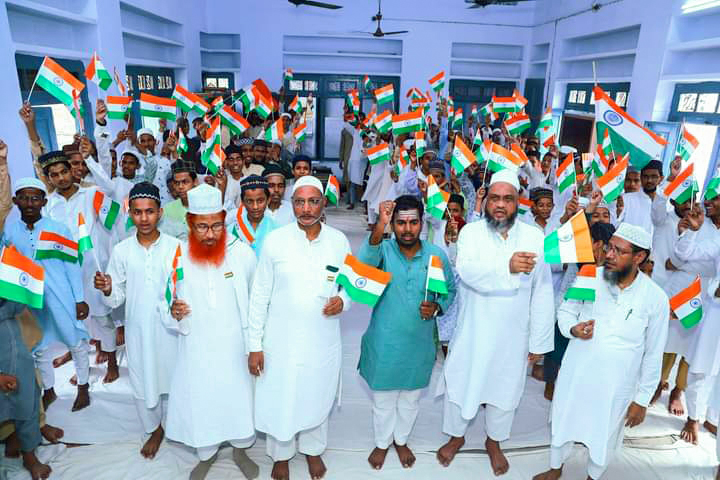
Students and teachers of Madrasa Jamia Arabia Jiaul Uloom, Varanasi celebrate the 'Har Ghar Tiranga' campaign on the eve of Independence Day
Till 1986, the government of the day didn’t interfere in the functioning of these institutions. The Shah Bano case turned the tide and shifted focus to the workings of madrasas.
A survey found that often a madrasa was the only option for impoverished families, and that it had outdated curricula comprising Urdu, Arabic, and Quranic memorisation (hifz), gave a limited exposure to science, mathematics, English, etc. By 2006, only 9.39% of primary-school children attended madrasas, with over 90% from low-income households. Most students drop out by their early 20s due to financial pressures, migrating to Kerala, Jaipur, or Jodhpur to undertake menial jobs.
In 1986, India launched a madrasa modernisation scheme to integrate science, math, and languages into traditional curricula. However, resistance from conservative factions and suspicions of governmental overreach hindered progress.
In 1993, the Indian government acknowledged the necessity to modernise madrasas. The government of P V Narasimha Rao wanted to foster a sense of security among the nation’s second-largest minority following the demolition of the Babri Masjid and the ensuing riots.
A 2002 memo mandated that state-funded madrasas refrain from “anti-national activities,” further polarising stakeholders.
After 2009, the Central government initiated several programs, including the Modernization of Madrasa Schemes (MOMS) and the Scheme for Providing Quality Education in Madrasas (SPQEM), aimed at incorporating more rational subjects into these educational institutions.
In 2018, PM Narendra Modi emphasised empowering Muslim youth with “Quran and computers,” though tangible outcomes remain sparse. Some states have derecognised madrasas or stripped Islamic subjects, sparking debates on cultural erasure.
Prominent institutions such as Jamiatur Raza Bareilly, Al-Jamiatul Ashrafia (Azamgarh), and Nadwatul Ulama (Lucknow) have integrated religious education with modern academic disciplines. In contrast, smaller independent madrasas, especially those located in rural regions, do not adopt the change due to limited resources.
Experts say that only adding modern subjects is not enough unless trained teachers and updated pedagogy are available. Balancing tradition with innovation demands collaboration between governments, madrasa boards, and civil society.
The modernisation of India’s madrasas necessitates collaboration among policymakers, educators, and local communities. By tackling economic inequalities and filling curricular voids, madrasas can evolve into comprehensive institutions that empower marginalised Muslims.
According to the Ministry of Minority Affairs, India has 24,010 madrasas, of which 4,878 were unrecognised in 2018-19. They have around 4% or less of Muslim children, aged 7-19, on their rolls.
The National Educational Policy 2020 stresses the need to liberalise education for the welfare of the marginalised sections of society. Madrasas are at the core of such a policy formulation.
ALSO READ: Ayisha Abdul Basith shows how religion can empower one to rise in life
In the 21st century, the majority of madrasa schools have embraced scientific curricula. Madrasas in Singapore have incorporated modern technologies such as tablets and courses in Artificial Intelligence. Indian Madrasas also need to move with the changing times.
(The Author is the National President of MSO)
